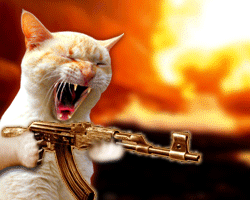In 1995, Steve Puetz, an investment newsletter writer, attempted to discover if eclipses and market crashes were somehow connected. He concluded that a full moon in general and a lunar (eclipse) full moon close to solar eclipses, in particular, seem to be the trigger that allows for the rapid change of investor psychology from manic greed to irrational fear. Using eight of the largest historical crashes in various markets from the Holland Tulip Mania in 1637 through the Tokyo crash in 1990 as case studies, Puetz found that all fell within a time period of six days before to three days after a full moon that occurred within six weeks of a solar eclipse. For all eight crashes to accidentally fall within the required intervals would be .23 raised to the eighth power, or less than one chance in 127,000. He discovered that market crashes tend to be lumped near the full moons that are also lunar eclipses. More specifically, the greatest number of crashes start after the first full moon after a solar eclipse when that full moon is also a lunar eclipse. Once the panic starts, Puetz notes, it generally lasts from two to four weeks. The tendency has been for the markets to peak a few days ahead of the full moon, move flat to slightly lower, waiting for the full moon to pass. Then on the day of the full moon or slightly after, the brunt of the crash hits the marketplace.Why is this relevant now?
Maybe you missed it over the weekend...

The next solar eclipse takes place on March 19, 2007.
Too, market crashes tend to happen on Mondays and Tuesdays, so tomorrow ought to be a doozy of a day, cuz, you know, today sucked in the markets; it will be a Tuesday, and less than three days after a lunar eclipse.
PS There will be another lunar eclipse in August, while the next solar eclipse will be September. 2007. Ohboy...
stock markets
stock market crash
lunar eclipse





